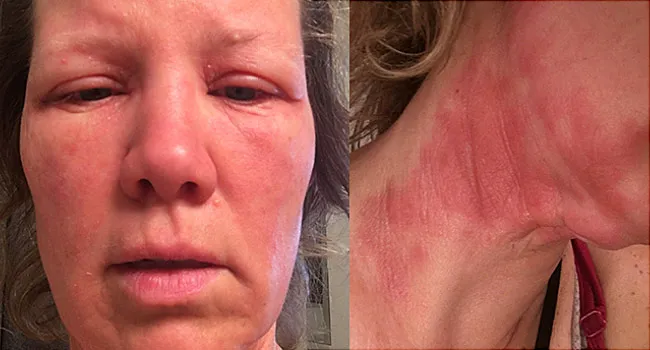You probably already know that
type 2 diabetes can cause long-term damage if you don’t control it, but it’s also important to understand that even well-controlled diabetes progresses over time — meaning you may have to adjust your treatment plan more than once.
The key to learning about the progression of diabetes is to understand the role of your pancreas, which produces insulin. For people with type 1 diabetes, the pancreas does not make any insulin, so they must take it through injections. With type 2, the pancreas doesn’t make enough insulin or the cells don’t respond to it adequately, according to the American Academy of Family Physicians. This means that the body has trouble moving sugar from the blood into cells to be used for energy. Diet, exercise, and medication, if prescribed, can all help those with type 2 diabetes lower their blood sugar levels and help their bodies use insulin made by the pancreas, according to the American Diabetes Association (ADA).
If
blood sugar levels remain high, the ADA says, you may be at risk for such diabetes complications as vision loss, heart disease, nerve damage, foot or leg amputation, and kidney disease. However, proper diabetes management can help prevent or delay the onset of these complications.
How Your Diabetes Treatment Plan Might Change
Over time, your medications, diet, and exercise goals may need to be adjusted. “Initially the pancreas produces extra insulin to make up for insulin resistance, but in most people, the pancreas eventually is unable to make the extra insulin to keep blood sugar levels normal,” says
Marc Jaffe, MD, a San Francisco endocrinologist in practice with Kaiser Permanente in Northern California.
After a type 2 diabetes diagnosis, your doctor will set blood sugar goals for you, recommend lifestyle changes, and perhaps prescribe oral medications such as metformin to help manage blood sugar levels, Dr. Jaffe says. “Because type 2 diabetes usually progresses over time, even people who don’t need medications at first are likely to need medications eventually,” he notes.
The next step in diabetes management, if these strategies aren’t working, is to change or add medication or add insulin, according to the 2014 Standards of Medical Care in Diabetes, published in the January 2014 issue of
Diabetes Care. Your blood sugar goals might also be adjusted, based on your overall health and history with diabetes control, according to the guidelines. For some people who are obese, bariatric surgery might also be an option.
The guidelines also note that because many people with type 2 diabetes will eventually need insulin, insulin therapy should not be feared or viewed as meaning that you’ve failed at managing your diabetes.
“This is a progression of the disease and not to be thought of as something that you caused,” says
Erin Palinski-Wade, RD, a certified diabetes educator in Franklin, New Jersey, and author of Belly Fat Diet for Dummies.
Tailoring Your Diabetes Treatment as You Age
Not only does diabetes itself progress, Palinski-Wade points out, but your body also changes over time. For example, you may experience complications from diabetes, like nerve pain, or develop osteoarthritis, which could make exercise more challenging, she notes. Those kinds of changes in your body would lead to adjustments in your
diabetes management plan.
Because of the way diabetes progresses as people age, the ADA, the American Association of Diabetes Educators, and the Academy of Nutrition and Dietetics came together in June 2015 to publish a
joint statement recommending that doctors give people with diabetes a referral to see a registered dietitian or certified diabetes educator at least once a year to fine-tune their management plans, including
diet and exercise. It’s also a good idea to see a diabetes educator any time you’re facing a new challenge that’s getting in the way of your self-management, such as when you’re diagnosed with another health condition or have physical limitations. Research published in 2014 in
Diabetes, Metabolic Syndrome and Obesity: Targets and Therapy also emphasizes that a personalized approach to diabetes nutrition with realistic goals that meet the individual’s lifestyle is an important part of diabetes treatment.
Coping With Type 2 Diabetes Progression
Even though type 2 diabetes is progressive and you will likely need to make adjustments to your management and treatment plans, you can take steps to cope with the changes:
- Eat healthfully. Your diet should be individualized, but people with diabetes can also benefit from Palinski-Wade’s advice to “focus on filling your plate halfway with plant-based foods such as vegetables at all meals.” She also urges people to learn to read labels and understand portion sizes — skills that will serve you well throughout your life.
- Aim for a healthy weight. Losing weight can improve your diabetes control; the ADA's 2014 guidelines for self-management suggest that many people with diabetes can benefit from losing at least a small amount of weight. Check with your doctor for a specific recommendation for you.
- Check your blood sugar. “As diabetes progresses, people may need to start checking or increase the frequency of checking their blood sugar levels, especially when blood sugar levels are high or low, hard to control, or in people who take insulin,” says Jaffe. Talk with a certified diabetes educator about the testing strategies that would work best for you.
- Be active. A mix of aerobic activity and resistance training helps to improve insulin sensitivity, which means your body uses insulin more efficiently, according to the ADA guidelines.
It can be challenging to live with a chronic condition, but taking care of yourself each day and checking in with your doctor and diabetes educator regularly can help you stay on top of your diabetes management.


